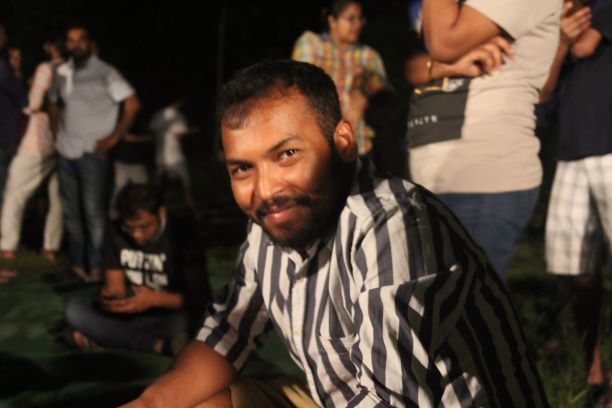Shafiullah Anis
 Various scholars have worked on casteism among Muslims starting with the premise that casteism among Muslims is an influence of “Hindu” caste structure present for centuries in Indian sub-continent. In this context, Imtiaz Ahmed (Ahmed, 2018) poses an interesting question: ‘If caste among Muslims owed itself entirely to Hindu influence, then the Islamization of Muslim groups over the centuries should have resulted in the slow and gradual elimination of caste principles and ideology. However, such evidences as is available suggest that Islamization serves to reinforce rather than weaken or eliminate caste distinctions.’
Various scholars have worked on casteism among Muslims starting with the premise that casteism among Muslims is an influence of “Hindu” caste structure present for centuries in Indian sub-continent. In this context, Imtiaz Ahmed (Ahmed, 2018) poses an interesting question: ‘If caste among Muslims owed itself entirely to Hindu influence, then the Islamization of Muslim groups over the centuries should have resulted in the slow and gradual elimination of caste principles and ideology. However, such evidences as is available suggest that Islamization serves to reinforce rather than weaken or eliminate caste distinctions.’
It would be an interesting exercise to understand the process of reification of the inegalitarian caste system within an alleged egalitarian Islamic culture, but before that it is important to understand whether this inegalitarianism has its source in Hindu culture through the process of acculturation and mixing, or the immigrant Muslims brought some inegalitarian values with them that found a suitable breeding ground in the hierarchical society of the Indian sub-continent.
In this direction, Ahmed has indicated towards the aporias within Islamic Jurisprudence that suggest that the popular idea of egalitarianism of Islam may not successfully pass the scrutiny. “This emphasis upon birth and ancestry acquired acceptance in Islamic law as time went by, (Prophet) Muhammad, whose statement ‘There are no genealogies in Islam’ is widely cited as evidence of his belief in equality of all believers, himself suggested that considerations of birth should receive special attention in the instance of marriage. According to a tradition, he is supposed to have taught, ‘Take ye care, that none contract in marriage but their proper guardians, and that they be not so contracted except with equals’ (Bukhari, 1862:436). Basing themselves on this very principle, Muslim jurists worked out an elaborate scheme of social grades and descent. Thus, according to Hanafiites, six elements were necessary to produce equality of status of which descent was most important…”
Ahmed finds similar obsession of lineage and birth among Shafi’i school in designating social hierarchies. Though, Maliki school, having their African influence, didn’t succumb to such distinctions as per his observations.
Despite the presence of lineage and birth as an important feature in determining the social worth of a person by various Islamic Jurisprudence, Ahmed fails to agree with Khan (Khan, 1968) who opines that “even if there were no caste influence on Muslim peasantries in India and Pakistan, the social structure would still be as rigidly stratified as it is now, resulting from a strict adherence to precedent recognized by Islamic societies as well as Islamic jurisprudence”.
Imtiaz Ahmed relies on the lack of evidence of social stratification in Muslim world beyond the sub-continent on his disagreement. He emphatically disagrees with Khan’s thesis. That Muslim caste owes itself directly to Hindu influence is his final conclusion. In this discussion, Ahmed has left many questions unanswered. Firstly, the few sources cited by Khan (1968) as evidence1 of a stratified society outside Indian sub-continent were not considered sufficient by Ahmed.
Secondly, the recent works on Sayyidism, Ashrafization and the presence of lineage based social stratification in Muslim society outside the sub-continent that have emphatically established the presence of elite classes that are endogamous, marked by lineage and birth, enjoying special social status and connecting themselves with the Prophet and his family (Corsi, 2004; Kazuo, 2012) are not referred by Ahmed. These works have successfully established that there is a distinction available to these lineage-based elites within the normative Islam as well as the society they live in. The discourse of egalitarianism and of lineage-based elites run parallel within the norm as well as practice.
~
Notes
1. References cited by Khan in support of presence of social hierarchy in various muslim societies: B. Spuler, “Iran and Islam,” American Anthropologist (April, 1956), 50.;W. Dostal: “Paria-Gruppen in Vorderasien,” Zeitschrift fur Ethnologic (1964), 192; H. J. Henninger, Paria-Stamme in ArabienFestchriftzum 50 juhrigenBestands-jubilaum des Missionshauses St. Cabriel (Wien-Modllng, 1939), 501-539; Ibn’ Khaldun, The Muqaddimuh, tr. Franz Rozenthal (New York, 1958), II,305-305.
References
Ahmed, I. (2018). Caste and Social Stratification among Muslims in India. Delhi: Aakar Books.
Corsi, M. (2004). Oriente Moderno. Anno ISLAM IN SOUTH ASIA, 23(1), 39–49. Retrieved from http://www.jstor.org/stable/25817916%5Cnhttp://about.jstor.org/terms
Kazuo, M. (2012). Sayyids and sharifs in Muslim societies: The living links to the Prophet. Sayyids and Sharifs in Muslim Societies: The Living Links to the Prophet, 1–276. https://doi.org/10.4324/9780203123157
Khan, ZR (1968). Caste and Muslim Peasantries of North India, (1).
~~~
Shafiullah Anis is an IIM Lucknow alumnus, working as Head, Glocal Business School, and his research area is the Marketplace, Society, and Culture.
Email: shafiullahanis@gmail.com










